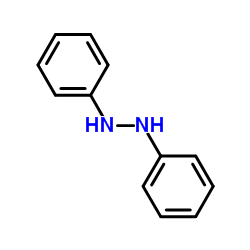Excited-state mixed valence in a diphenyl hydrazine cation: Spectroscopic consequences of coupling and transition dipole moment orientation.
Jenny V Lockard, Jeffrey I Zink, Dwight A Trieber Ii, Asgeir E Konradsson, Michael N Weaver, Stephen F Nelsen
Index: J. Phys. Chem. A 109(6) , 1205-15, (2005)
Full Text: HTML
Abstract
A quantitative model of mixed-valence excited-state spectroscopy is developed and applied to 2,3-diphenyl-2,3-diazabicyclo[2.2.2]octane. The lowest-energy excited state of this molecule arises from a transition from the ground state, where the charge is located on the hydrazine bridge, to an excited state where the charge is associated with one phenyl group or the other. Coupling splits the absorption band into two components with the lower-energy component being the most intense. The sign of the coupling, derived by using a neighboring orbital model, is positive. The transition dipole moments consist of parallel and antiparallel vector components, and selection rules for each are derived. Bandwidths are caused by progressions in totally symmetric modes determined from resonance Raman spectroscopic analysis. The absorption, emission, and Raman spectra are fit simultaneously with one parameter set.
Related Compounds
| Structure | Name/CAS No. | Molecular Formula | Articles |
|---|---|---|---|
 |
1,2-Diphenylhydrazine
CAS:122-66-7 |
C12H12N2 |
|
Development of QSAR models for predicting hepatocarcinogenic...
2009-09-01 [Eur. J. Med. Chem. 44 , 3658-64, (2009)] |
|
In situ infrared monitoring of the solid/liquid catalyst int...
2011-07-21 [Phys. Chem. Chem. Phys. 13(27) , 12463-71, (2011)] |
|
The effect of replacing carbon by nitrogen in reductions wit...
2011-11-18 [J. Org. Chem. 76(22) , 9438-43, (2011)] |
|
[Determination of azobenzene and hydrazobenzene in Ketazon d...
1981-06-01 [Cesk. Farm. 30(5) , 159-61, (1981)] |
|
Hydrazobenzene.
2011-01-01 [Rep. Carcinog. 12 , 236-7, (2011)] |